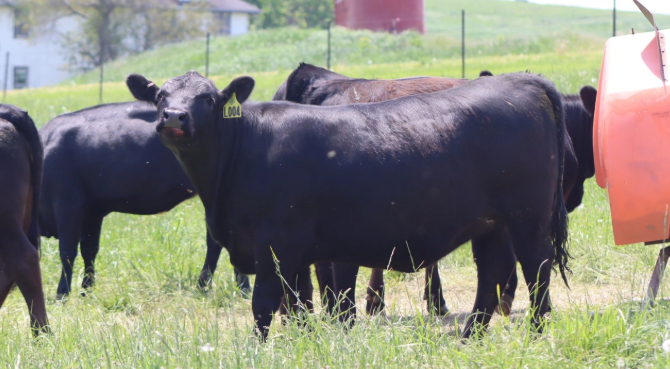Raising healthy, productive cattle requires more than just good genetics and access to clean water. One of the most often overlooked yet vital components of cattle health is mineral nutrition. While protein and energy typically dominate conversations about cattle feeding, minerals play an equally crucial role in overall health, growth, reproduction, and immune function.
This post dives into the essential minerals cattle need, why they matter, signs of deficiencies, and how to manage a mineral supplementation program that supports both herd well-being and farm profitability.
Why Minerals Matter
Minerals are inorganic elements required in small amounts, but they are essential for numerous bodily functions in cattle, including:
- Enzyme and hormone function
- Bone development and maintenance
- Muscle and nerve function
- Reproduction and fertility
- Immune system performance
Mineral deficiencies—or imbalances—can quietly undermine herd productivity. The effects can be subtle at first: poor weight gains, lower conception rates, or dull coats. Over time, they can lead to serious health issues, economic losses, and animal suffering.
Macro vs. Micro Minerals
Cattle require two main classes of minerals:
1. Macro Minerals
These are needed in larger quantities and include:
- Calcium (Ca)
Important for bone growth, muscle contraction, and milk production. Deficiency can cause rickets in young animals and milk fever in lactating cows. - Phosphorus (P)
Works with calcium in skeletal development and energy metabolism. Low phosphorus can reduce fertility and feed intake. - Magnesium (Mg)
Essential for nerve function and enzyme activation. A lack of magnesium can lead to grass tetany, especially in early spring when pastures are lush. - Potassium (K)
Supports muscle function and osmotic balance. Deficiencies are rare but can occur during times of stress or with high grain feeding. - Sodium (Na) and Chloride (Cl)
Together form salt (NaCl), necessary for nerve impulses and fluid balance. Cattle instinctively seek out salt when deficient. - Sulfur (S)
Needed for amino acids and microbial activity in the rumen. Excess sulfur, however, can lead to toxicity issues such as polioencephalomalacia.
2. Trace (Micro) Minerals
Needed in smaller quantities, but just as vital:
- Copper (Cu)
Supports immune function, reproduction, and pigmentation. Deficiency leads to anemia, poor coat color, and reduced fertility. High levels of molybdenum or sulfur can reduce copper availability. - Zinc (Zn)
Crucial for skin health, wound healing, hoof integrity, and reproduction. - Selenium (Se)
Functions as an antioxidant, protecting cells from damage. Deficiency can lead to white muscle disease in calves and poor fertility in adults. - Manganese (Mn)
Important for skeletal development and reproductive performance. - Iron (Fe)
Necessary for oxygen transport in the blood. Deficiencies are rare unless calves are raised in highly sanitized environments with no soil contact. - Iodine (I)
Required for thyroid function and metabolic regulation. - Cobalt (Co)
Required for vitamin B12 synthesis by rumen microbes.
Recognizing Mineral Deficiencies
Symptoms of mineral imbalances can vary widely and may overlap with other issues like parasites, disease, or poor forage quality. However, common signs include:
- Poor growth rates
- Low feed intake
- Infertility or irregular estrus cycles
- Weak calves or stillbirths
- Poor coat condition or hair discoloration
- Lameness or swollen joints
- Increased disease susceptibility
If you’re seeing unexplained health or productivity problems in your herd, a mineral imbalance may be a hidden culprit.
Mineral Sources
Minerals can come from several sources:
1. Forage and Feedstuffs
Grass, hay, silage, and grains naturally contain minerals, but levels vary by region, soil quality, plant species, and maturity. For example, sandy soils may be deficient in selenium or copper. Conducting forage and soil tests is a key first step to understanding what your cattle are (or aren’t) getting naturally.
2. Free-Choice Mineral Mixes
These are often offered in loose form or blocks and allow cattle to self-regulate intake. While convenient, they may not ensure consistent consumption across the herd, especially in extreme weather or when animals are not craving salt.
3. Mineral-Fortified Feed
Supplementing minerals directly through a total mixed ration (TMR), grain mix, or protein tub ensures every bite delivers consistent nutrients. This method is especially effective for backgrounding, feedlot, or dairy operations.
4. Injectable and Bolus Supplements
Used in targeted situations, such as during calving season, in mineral-deficient regions, or in animals with known absorption issues. These methods offer a short-term solution but are not a replacement for a well-balanced, ongoing mineral program.
Factors Affecting Mineral Absorption
Even when minerals are present in the diet, they may not be fully absorbed due to:
- Antagonists: Elements like molybdenum, sulfur, or iron can bind with other minerals and reduce their availability (e.g., molybdenum can reduce copper absorption).
- Soil pH and water quality: High sulfur or iron in water can impair mineral uptake.
- Breed differences: Some breeds, like Simmental or Charolais, have higher copper requirements than others.
- Age and physiological state: Pregnant or lactating animals have greater mineral needs than dry or maintenance-stage animals.
Designing a Mineral Program
Here’s how to build a targeted, effective mineral nutrition plan:
- Test Forage and Water
Know what your cattle are consuming. A basic forage test will show levels of key minerals and help guide supplementation. - Choose a Region-Specific Mineral Mix
Work with your vet or nutritionist to select a mix tailored to your area’s soil and forage profile. For example, areas low in selenium or high in molybdenum require specific balancing. - Monitor Intake
Make sure cattle are actually consuming the minerals. Under- or overconsumption may require adjusting palatability, salt content, or delivery method. - Match to Production Stage
Growing calves, breeding cows, and finishing steers all have different needs. Use targeted products when appropriate. - Evaluate and Adjust
Regularly assess herd health, reproduction, and performance. Blood or liver biopsies can provide precise mineral status if issues persist.
The Economic Payoff
While mineral supplements add a cost to your feeding program, the return on investment is often substantial. Improved conception rates, faster weight gain, fewer sick days, better calf vigor, and enhanced immune function all lead to stronger bottom-line results.
For example, studies show that copper and selenium deficiencies can reduce pregnancy rates by as much as 20%, while strategic supplementation can increase weaning weights by 10–15%. These gains far outweigh the cost of a mineral program.
Conclusion
Minerals are the unsung heroes of cattle nutrition. Invisible to the eye, yet vital to virtually every physiological process, they play a foundational role in herd health, reproduction, and performance. By understanding mineral needs, testing your feed, and tailoring your supplement strategy, you can help your cattle reach their full potential—naturally, efficiently, and profitably.



